- Call us: 01444 237070
- Contact Us
- Stores
- Sign In / Register
-
- Back
- Used Cameras
- Used Accessories
- Used Lenses
- Used Video
- Used Film Equipment
- Used Stock Alert
- Used Blank Test
- Sell or Part Exchange
- Used Clearance
- Recently Added Used Equipment
- Park Picks
- All Used Black Friday Deals
- Faulty
- Trade-In
- Blog
- New in
- Call us
- Contact us
- Stores
- Sign in
- Categories
- Tips & Inspiration
- Reviews
- News
- Events
- Features
- Buying Guides
- Competitions
Fujifilm X-T30 III Review
It has been almost four years since the previous generation Fujifilm X-T30 II, and the new Fujifilm X-T30 III arrives as the latest update to the compact, entry-level mirrorless range. The Mark III continues as a photo-centric hybrid, offering the same dial-based shooting experience and beautiful retro styling that is inspired by classic film cameras.
Is This the Best Beginner Camera for 2025? | Find out in our Fujifilm X-T30 III Video Review
Despite being aimed at beginner photographers and enthusiast creators, it inherits many technologies from flagship models. As we explore more in this Fujifilm X-T30 III Review, we discover that upgrades include the X-Processor 5, which brings a number of benefits such as faster autofocus, better subject recognition and improved video options.
The addition of a new Film Simulation Dial also makes it easier than ever to access Fujifilm’s legendary colour profiles from the top plate too. Although there are other changes to the body, it is still one of Fujifilm’s lightest interchangeable lens cameras, which looks almost identical to its predecessor.
This generation will be delightfully familiar to existing X-Series mirrorless camera users, while giving newcomers an enviable way to begin exploring photography and video with the X Series. Whether you’re considering one for yourself or simply here to learn about the photo and video specs, join us for this review as we dive into what this classic camera has to offer up-and-coming content creators, staring with pricing.
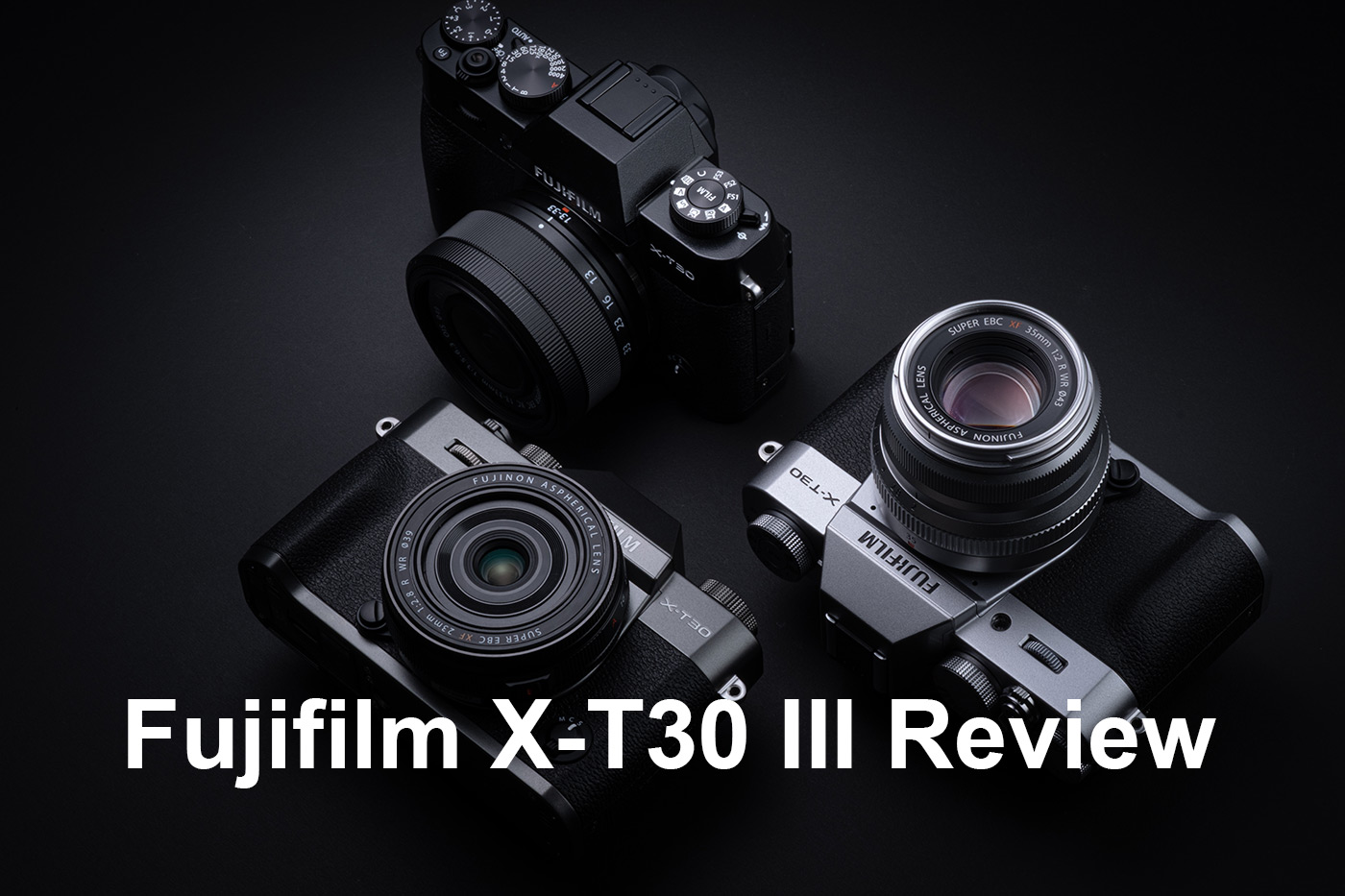
Colours, Lens Kits and Price Options
The Fujifilm X-T30 III launched 23rd October 2025 in three colours, with each offering the same classic styling that has makes this so popular. The choices include a classic X-T30 III Black, X-T30 III Silver with a brighter finish, and an X-T30 III Charcoal Silver that matches other models, but is a first for the X-T30 series.
You can choose between body-only, or a lens kit. The body-only Fujifilm X-T30 III price is £849.00, while the lens kit with the newly launched XC 13-33mm f/3.5-6.3 OIS lens is £999.00. Considering the lens retails for £329.00, this is excellent value and one of the most affordable ways to join the X Series. Each colour is available as a kit:
- X-T30 III Camera with XC 13-33mm Lens Black
- X-T30 III Camera with XC 13-33mm Lens Silver
- X-T30 III Camera with XC 13-33mm Lens Charcoal Silver
Whichever you choose, all three share the same design, new Film Simulation Dial, and upgraded features to the most accessible hybrid camera in the range.
With that in mind, let’s find out what’s new in this generation.
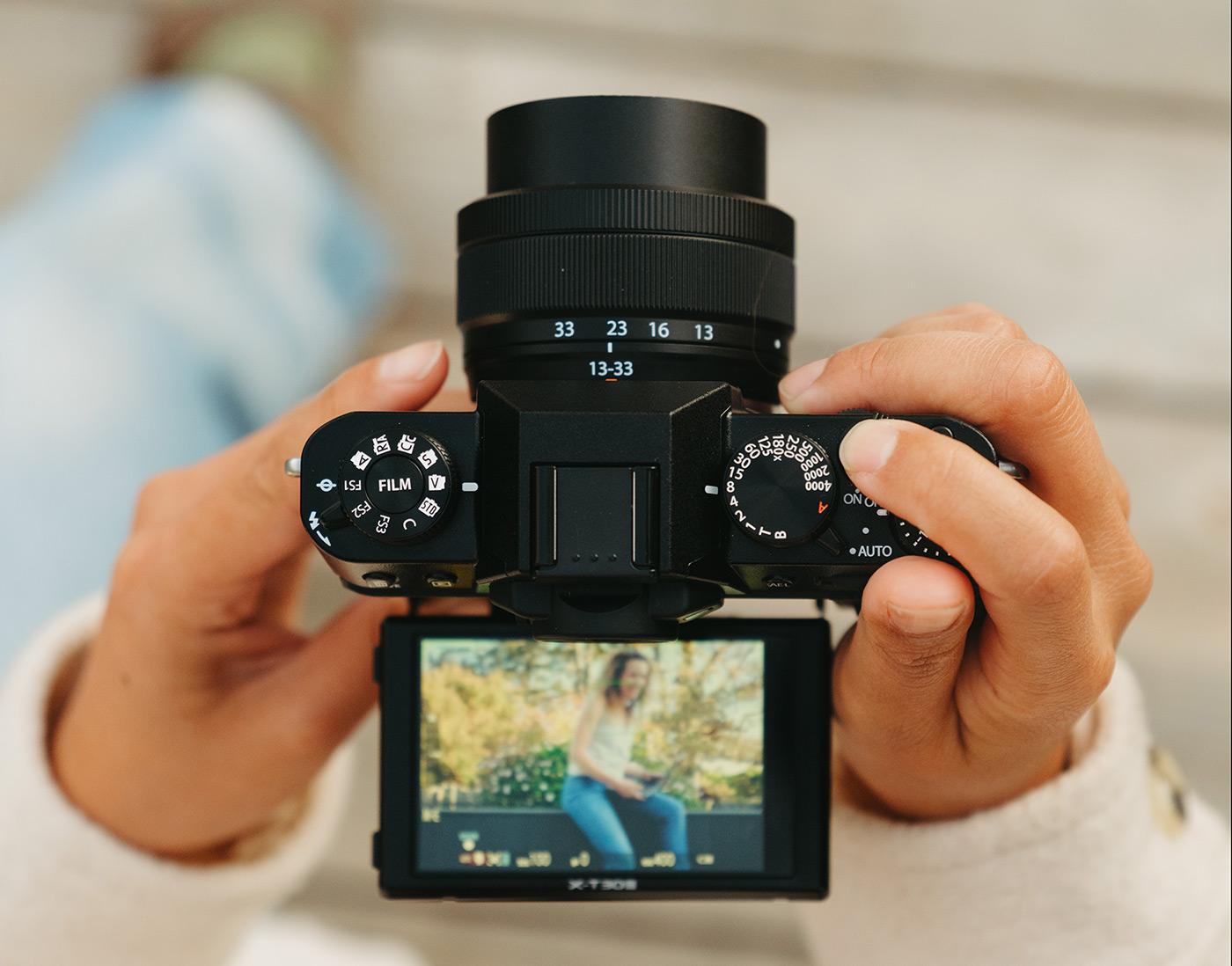
What’s new in the X-T30 III?
The list below highlights the most notable Fujifilm X-T30 III upgrades, which aren’t always apparent from specs. From the new processor, which handles autofocus, to updated ergonomics and video, Fujifilm has made a number of refinements across the board for this generation.
- New X-Processor 5 (faster processing, lower power consumption)
- Improved autofocus performance with new deep learning subject detection
- Expanded subject recognition (adds insects and drones)
- Enhanced video including Vertical video support, touch tracking AF, Digital Image Stabilisation + Boost
- New Film Simulation Dial on top plate
- Two new Film Simulations (REALA ACE and NOSTALGIC Neg.)
- Upgraded AUTO mode with broader scene detection
- Improved battery life (now up to 425 frames per charge in Economy modes)
- New Silver finish and new Charcoal Silver option
- Updated Bluetooth 5.2 LE and faster 10 Gbps USB standard
Next up we compare the two generations side by side for you.

Sample 01 ©Juan Pablo. No EXIF data
Fujifilm X-T30 II vs X-T30 III Specs Comparison
The Fujifilm X-T30 III and its predecessor look almost identical on the exterior, sharing the same compact body and the same 26.1-megapixel X-Trans CMOS 4 sensor. However, once you look closer, the new model has a refined grip, new Film Simulation dial and plenty of updates under the hood, compared below.
|
|
Fujifilm X-T30 III (new) |
Fujifilm X-T30 II |
|
Model year |
2025 |
2021 |
|
Image sensor |
26.1 MP APS-C X-Trans CMOS 4 (BSI) |
26.1 MP APS-C X-Trans CMOS 4 (BSI) |
|
Image processor |
X-Processor 5 |
X-Processor 4 |
|
ISO range |
160-12 800 (exp. 80-51 200) |
160-12 800 (exp. 80-51 200) |
|
Autofocus system |
Hybrid AF with deep-learning subject detection (people, animals, birds, vehicles, insects, drones) |
Hybrid AF with face/eye detection only |
|
Low-light AF sensitivity |
-7.0 EV (with XF50 mm f/1.0 R WR) |
-7.0 EV (with XF50 mm f/1.0 R WR) |
|
Film Simulation modes |
20 modes including REALA ACE and NOSTALGIC Neg. |
18 modes (no REALA ACE) |
|
Custom Film Simulation dial |
Yes - dedicated dial with 3 custom slots (FS1-FS3) |
No dedicated dial |
|
Video recording |
6.2 K (6240 x 4160) 30 p / 4K 60 p 4:2:2 10-bit internal |
4K 30 p 8-bit internal / FHD 240 p slow motion |
|
High-speed video |
FHD 240 p (200 Mbit/s) |
FHD 240 p (200 Mbit/s) |
|
Digital stabilisation |
Yes (+ Boost mode for video) |
Yes (video only) |
|
Continuous shooting |
Up to 30 fps (electronic, 1.25x crop) / 8 fps (mechanical) |
Up to 30 fps (electronic, 1.25x crop) / 8 fps (mechanical) |
|
Buffer capacity (JPEG) |
1000+ frames (at 4-5 fps) |
Approx. 1000+ frames (at 4-5 fps) |
|
Shutter speed |
1/4000 s (mech) - 1/180 000 s (elec) |
1/4000 s (mech) - 1/32 000 s (elec) |
|
Display |
3.0-inch tilting touchscreen (1.62 M dots) |
3.0-inch tilting touchscreen (1.62 M dots) |
|
Viewfinder |
0.39-inch OLED EVF (2.36 M dots, 0.62x) |
0.39-inch OLED EVF (2.36 M dots, 0.62x) |
|
Battery |
NP-W126S Li-ion (up to 425 shots Economy mode) |
NP-W126S Li-ion (up to 390 shots Economy mode) |
|
Video battery life |
6.2 K ≈ 45 min (real) / 65 min (continuous) |
4K ≈ 45 min (real) / 60 min (continuous) |
|
Connectivity - Wi-Fi |
IEEE 802.11 b/g/n (WPA2/WPA3) |
IEEE 802.11 b/g/n (WPA2) |
|
Connectivity - Bluetooth |
Version 5.2 (LE) |
Version 4.2 (LE) |
|
USB port |
USB-C (10 Gbps, charging and data) |
USB-C (5 Gbps, charging and data) |
|
HDMI output |
Micro (Type D) |
Micro (Type D) |
|
Audio / remote |
2.5 mm stereo mini-jack (mic + remote) |
2.5 mm stereo mini-jack (mic + remote) |
|
Hot shoe |
TTL-compatible |
TTL-compatible |
|
Dimensions (W x H x D) |
118.4 x 82.8 x 46.8 mm |
118.4 x 82.8 x 46.8 mm |
|
Weight (with battery + card) |
378 g |
378 g |
|
Body colours |
Black, Silver, Charcoal Silver |
Black, Silver |
The Fujifilm X-T30 III is a solid evolution, with updates that make for a better and enjoyable shooting experience. The faster processor improves autofocus, video and overall handling, while the new Film Simulation Dial helps with more creative control. All of the other refinements like battery life and connectivity make easier to live with.
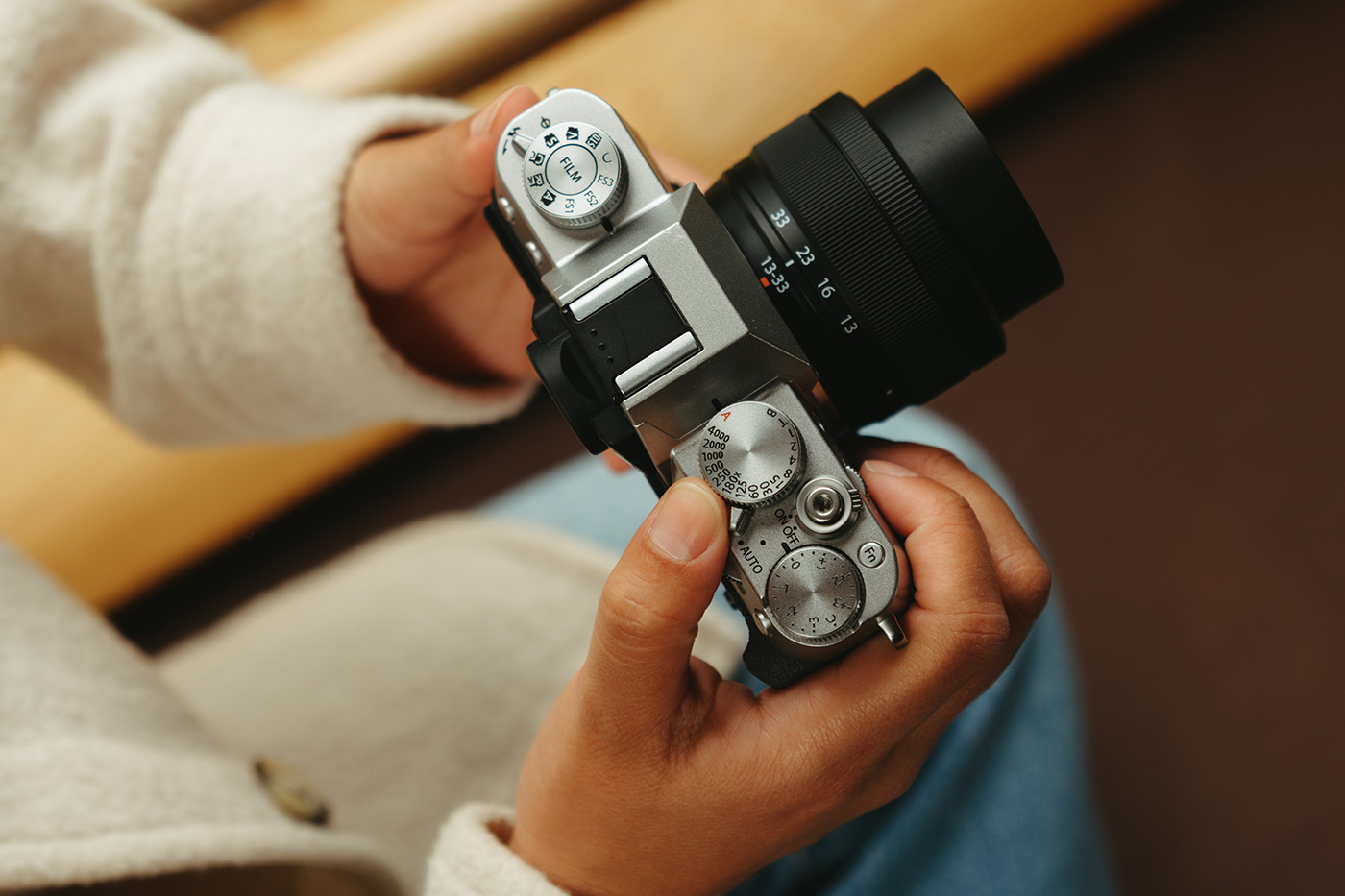
Next we look at which photo features you can expect from this camera.
Photo Features
The Fujifilm X-T30 III is a photo-first camera with plenty of tools to help beginners learn, experiment and grow their skills. The 26.1-megapixel X-Trans CMOS 4 sensor stills delivers excellent image quality, with rich colour and good levels of detail straight out of camera.
One of the main highlights is the Film Simulation Dial for profiles such as PROVIA, Velvia, Classic Chrome, ETERNA and the two newest additions, REALA ACE and NOSTALGIC Neg. Each offers a distinct look, allowing users to explore different styles without editing. Three custom slots (FS1-FS3) let you save your own unique “recipes” so that favourite settings can be recalled instantly. Although these do work for video, there are limitations, but for photographers these are a great way to explore polished styles that don’t need any editing.
As well as Film Simulations, the X-T30 III includes a full range of photographic tools that will appeal to beginners and enthusiasts:
- Exposure control modes, Program, Aperture, Shutter and Manual modes for learning exposure control.
- Auto Scene Recognition, Chooses optimal settings for 15 scene types, from night and landscape to sport or macro.
- HDR and Dynamic Range settings, Capture more detail in bright and dark areas of high-contrast scenes.
- Focus Bracketing and Focus Stacking, Combine multiple shots for greater depth of field in macro and product photography.
- Multiple Exposure, Blend up to nine images for creative composites.
- Panorama mode, Easily create sweeping landscape images.
- Grain Effect and Colour Chrome settings, Add texture or enhanced contrast for artistic finishes.
- Monochrome and ACROS modes, Faithfully reproduce film-like black and white styles.
- Interval and self-timer shooting, Ideal for time-lapse sequences or capturing self-portraits.
Taking into account the wide range of over 40 Fujifilm X Mount lenses, these creative features will encourage experimentation across all types of photography, from portraits and travel to landscapes or everyday moments.

Sample 02 ©Jon Kerrin. Captured with XF 55-200mm F/3.5-4.8 R LM OIS at 95mm. 0.4 sec. f/8. ISO 160
Next we explore video capabilities for budding creators.
Video Performance
Although the X-T30 III is a photography-focused hybrid camera, its has excellent video options, and can record 6.2K internally at up to 30 frames per second, with the full sensor width for sharp, detailed results. For smaller file sizes it also records in DCI 4K and 4K UHD at up to 60 frames per second, and Full HD up to 240 fps for slow-motion effects.
There’s support for Vertical Video now (9:16), together with Touch Tracking AF that is inherited from higher-end models such as the X-H2S. Additionally, the Mark III offers Digital IS and IS Boost for steadier handheld footage.
All video data is saved in H.265 HEVC or H.264 AVC formats, with a choice between 8-bit or 10-bit colour depth depending on your needs. Shooting in 10-bit gives smoother gradations and more flexibility for colour grading. Bit rates range from 25 to 200 Mbps, offering options for different storage speeds and quality.
The camera also offers HDMI output at 4:2:2 10-bit, allowing high-quality external recording or monitoring, and even supports 12-bit RAW output with compatible external recorders.
Next we explore more detailed video options for each recording method, whether saved internally to an SD card or recorded externally over HDMI. Internal recording refers to footage written directly to a memory card inside the camera, while external recording uses an HDMI cable to output video to a monitor or recorder.
Advanced users can also work with RAW video, which contains unprocessed data from the sensor for maximum flexibility during colour grading and editing. The following tables summarise each type of video capture supported by the X-T30 III.
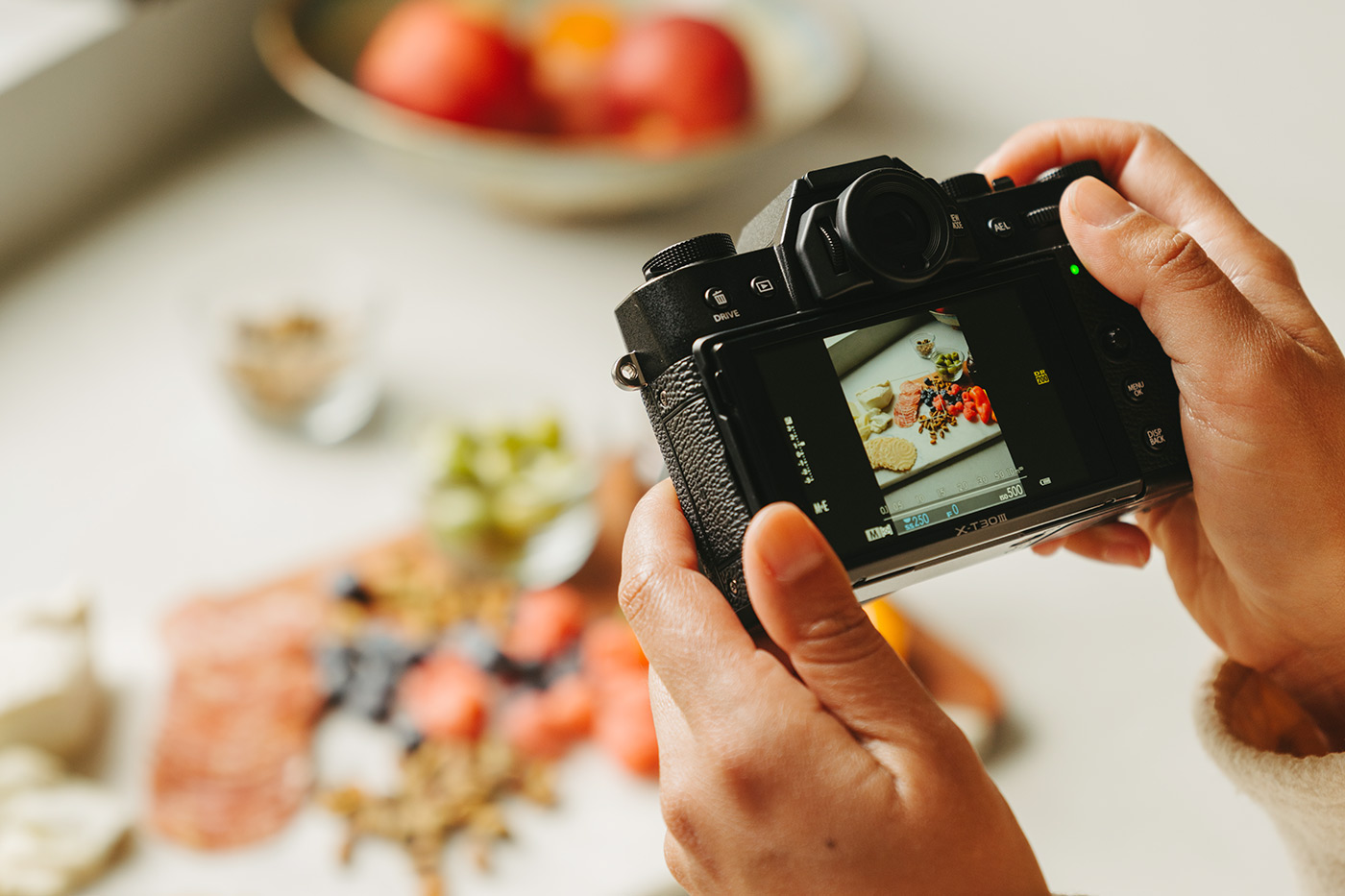
Internal Recording (to SD Card)
The X-T30 III records high-quality 6.2K, 4K, and Full HD video internally to SD cards, using efficient H.265 or H.264 codecs. Users can choose between 8-bit and 10-bit colour, with bit rates up to 200 Mbps depending on the mode.
|
6.2K (3:2) |
6240 × 4160 |
29.97 / 25 / 24 / 23.98 |
H.265 Long GOP MOV (4:2:2 / 4:2:0) |
200 / 100 / 50 / 25 / 8 |
10-bit |
Not possible |
Full sensor width |
|
DCI 4K (17:9) |
4096 × 2160 |
59.94 / 50 / 29.97 / 25 / 24 / 23.98 |
H.265 Long GOP MOV (4:2:2 / 4:2:0) |
200 / 100 / 50 / 25 / 8 |
10-bit |
1.44× / 1.32× |
Cinema 4K format |
|
4K UHD (16:9) |
3840 × 2160 |
59.94 / 50 / 29.97 / 25 / 24 / 23.98 |
H.265 Long GOP MOV (4:2:2 / 4:2:0) |
200 / 100 / 50 / 25 / 8 |
10-bit |
1.18× / 1.0× |
Standard 4K recording |
|
4K (H.264) |
3840 × 2160 |
59.94 / 50 / 29.97 / 25 / 24 / 23.98 |
H.264 Long GOP MOV or MP4 (4:2:0) |
200 / 100 / 50 / 25 / 8 |
8-bit |
1.18× / 1.0× |
Legacy codec option |
|
Full HD (17:9) |
2048 × 1080 |
59.94 / 50 / 29.97 / 25 / 24 / 23.98 |
H.265 Long GOP MOV (4:2:2 / 4:2:0) |
200 / 100 / 50 / 25 / 8 |
10-bit |
1.32× / 1.0× |
Professional HD recording |
|
Full HD (16:9) |
1920 × 1080 |
59.94 / 50 / 29.97 / 25 / 24 / 23.98 |
H.265 Long GOP MOV (4:2:2 / 4:2:0) |
200 / 100 / 50 / 25 / 8 |
10-bit |
1.32× / 1.0× |
Most common HD format |
|
Full HD (9:16) |
1080 × 1920 |
29.97 / 25 / 24 / 23.98 |
H.265 Long GOP MOV (4:2:2 / 4:2:0) |
200 / 100 / 50 / 25 / 8 |
10-bit |
1.32× / 1.0× |
Vertical video for social media |
|
High-Speed FHD (17:9 / 16:9) |
2048 × 1080 / 1920 × 1080 |
240 / 200 / 120 / 100 |
H.265 Long GOP MOV (4:2:2 / 4:2:0) |
200 (recording) |
10-bit |
1.29× |
Slow motion up to 10× |
|
High-Speed FHD (H.264) |
2048 × 1080 / 1920 × 1080 |
240 / 200 / 120 / 100 |
H.264 Long GOP MOV or MP4 (4:2:0) |
200 (recording) |
8-bit |
1.29× |
8-bit alternative for compatibility |
HDMI Output (External Recording)
For more advanced workflows, the X-T30 III outputs clean 10-bit 4:2:2 video over HDMI, suitable for use with external recorders or monitors.
|
Resolution / Aspect |
Size (px) |
Frame Rate (p) |
HDMI Output (Sampling / Bit Depth) |
Notes |
|
6.2K (3:2) |
6240 × 4160 |
29.97 / 25 / 24 / 23.98 |
FHD 4:2:2 10-bit |
Downsampled full-sensor output |
|
DCI 4K (17:9) |
4096 × 2160 |
59.94 / 50 / 29.97 / 25 / 24 / 23.98 |
DCI 4K 4:2:2 10-bit |
Clean 10-bit signal |
|
4K UHD (16:9) |
3840 × 2160 |
59.94 / 50 / 29.97 / 25 / 24 / 23.98 |
4K 4:2:2 10-bit |
For external recorders |
|
Full HD (17:9 / 16:9) |
2048 × 1080 / 1920 × 1080 |
59.94 / 50 / 29.97 / 25 / 24 / 23.98 |
FHD 4:2:2 10-bit |
Standard HDMI output |
High-Speed Recording (HDMI Only)
When recording high-frame-rate footage externally, the X-T30 III outputs clean Full HD 10-bit video.
|
Resolution / Aspect |
Size (px) |
Frame Rate (p) |
HDMI Output (Sampling / Bit Depth) |
Notes |
|
Full HD (16:9) |
1920 × 1080 |
120 / 100 |
FHD (120p / 100p) 4:2:2 10-bit |
HDMI-only high-speed capture |
HDMI RAW Output
For professional workflows, the camera supports RAW output over HDMI in both 6.2K and 5.2K formats, with 12-bit colour for maximum flexibility in post-production.
|
Resolution / Aspect |
Size (px) |
Frame Rate (p) |
Bit Depth |
Notes |
|
6.2K (3:2) |
6240 × 4160 |
29.97 / 25 / 24 / 23.98 |
12-bit |
Full-sensor RAW output |
|
5.2K (16:9) |
5232 × 2944 |
59.94 / 50 / 29.97 / 25 / 24 / 23.98 |
12-bit |
Higher-frame-rate RAW signal |
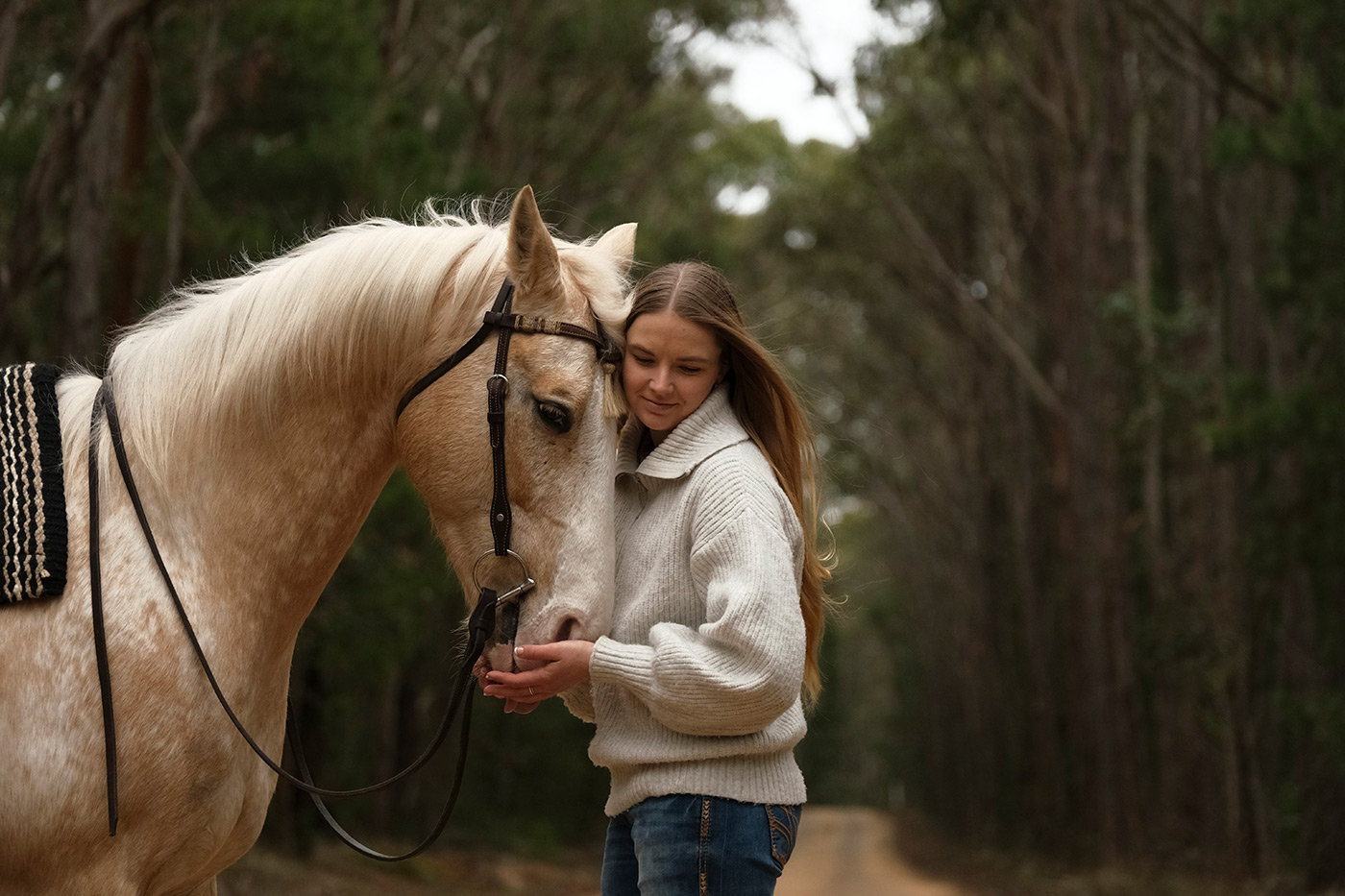
Sample 03 ©Jo Howell. Captured with XF 50-140mm F/2.8 R LM OIS WR at 80mm. 1/1250 sec. f/2.8. ISO 1600
Handling and Design
The X-T30 III is a beautiful retro-inspired camera, that keeps the same compact body size as its predecessor but with some subtle refinements to the grip and controls. These make it easier to hold, even with longer lenses, while keeping the vintage look with classic lines that define this series.
A 3.0-inch tilting touchscreen LCD with 1.62 million dots provides a clear, bright view for composing and reviewing shots, which also helps when shooting high or low angles that you sometimes want. The touchscreen supports touch focus, menu navigation and playback, so anyone can operate the camera without relying purely on the buttons and dials.
The 2.36 million-dot electronic viewfinder (EVF) offers 100% frame coverage and displays exposure, focus and colour in real time, with a reliable preview of what the final image will look like before pressing the shutter.
Top-plate dials are central to the X-T30 III’s usability, and these are the main attraction for many creators, providing quick access to exposure settings without going into the menus. With such a lightweight design at just 378 g, this is a very easy camera to live with day-to-day and ideal for learning photography as you go.
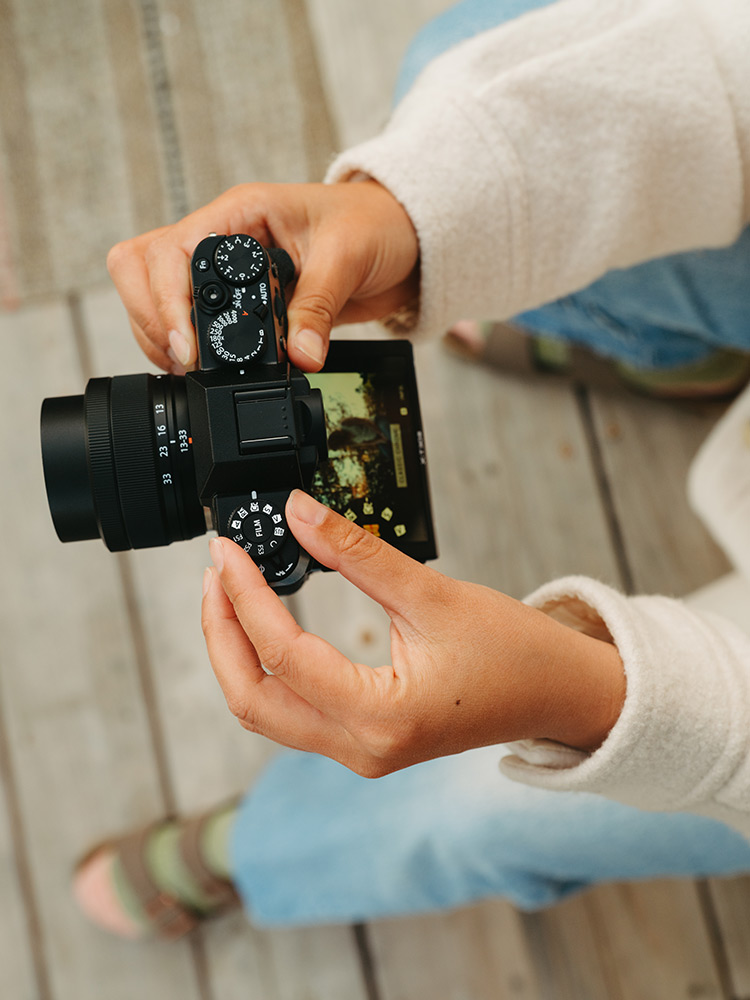
New XC 13-33mm f/3.5-6.3 OIS Kit Lens
Fujifilm released the XC 13-33mm f/3.5-6.3 OIS lens at the same time, which is bundled in the lens kits. The zoom range span 20-50mm full-frame equivalent, which is a good range for everyday photography, vlogging and travel. Despite the zoom range, it weighs just 125 g and has a manual retractable design, making the kit compact enough to bring along anywhere.
It also offers Built-in Optical Image Stabilisation with up to 4 stops of shake reduction, and has an advanced optical layout for great results. The minimum focus distance is just 20 cm, and autofocus is driven by a fast, quiet VCM motor.
The lens and camera create one of the most compact interchangeable-lens combinations in the entire X Series, with impressive performance for both stills and video.
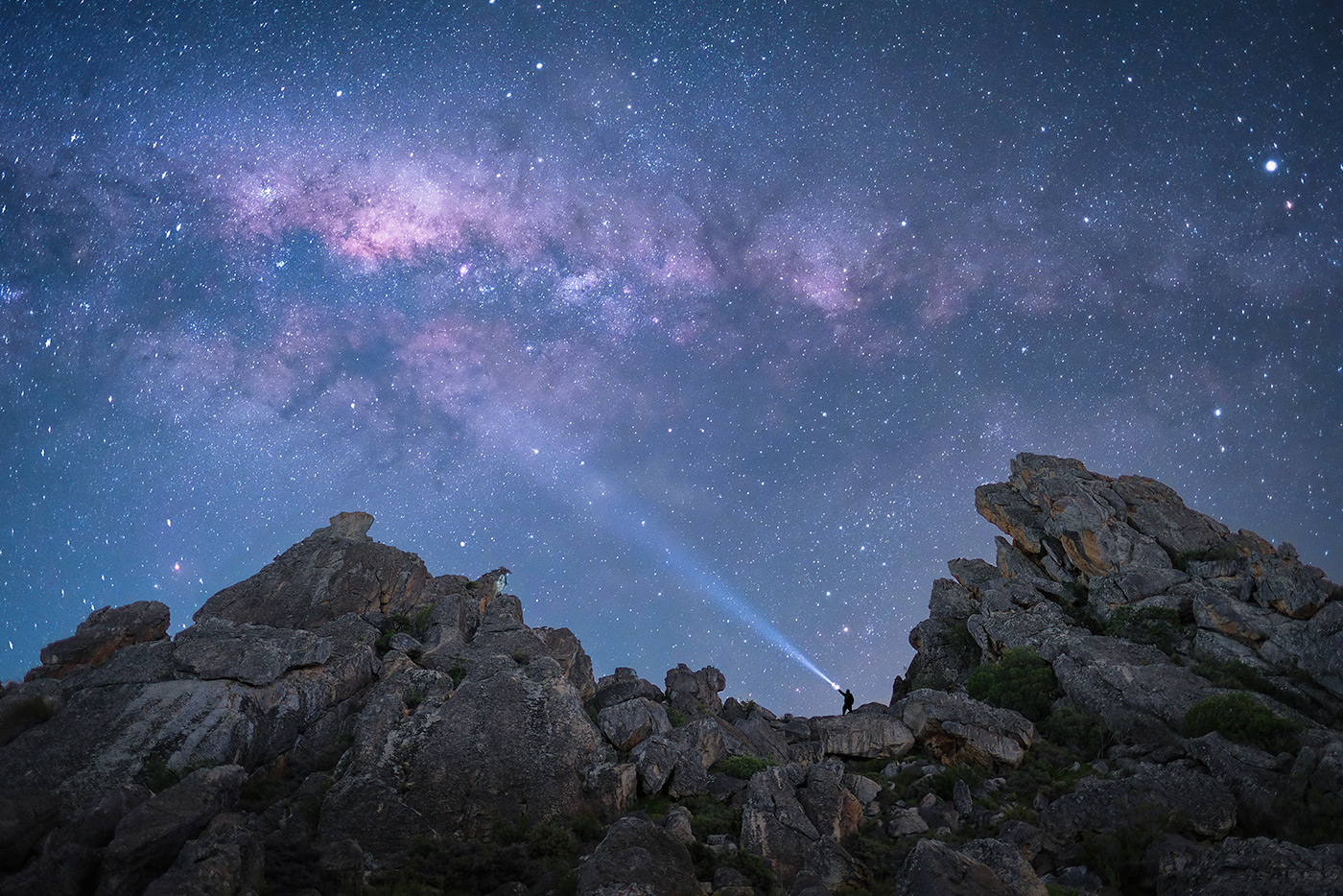
Sample 04 ©Jon Kerrin. Captured with XF 16mm F1.4 R WR. 15 sec. f/1.4. ISO 3200
Connectivity and Fujifilm X-T30 III Accessories
The Fujifilm X-T30 III includes connectivity that makes image transfer, remote control and sharing easy. Built-in Wi-Fi (IEEE 802.11 b/g/n) and upgraded Bluetooth 5.2 LE provide wireless connection to Fujifilm’s XApp, which enables photo and video transfer, back up and remote control from a smartphone or tablet.
The app also enables easy pairing with Instax Link printers, with support for mini, SQUARE and WIDE print formats for anyone who enjoys instant photo prints. Check our range of compact photo printers here, and our Guide To Instax Cameras and Printers for more on the range.
A USB-C (10 Gbps) port handles both charging and data transfer, while the HDMI micro connector (Type D) supports clean video output for an external video recorder or monitor. The camera also features a 2.5 mm stereo input that can be used with a video microphone or remote release like the Fujifilm RR-100.
Other useful accessories include spare NP-W126S batteries and an SD memory card, which are worth getting straight away.
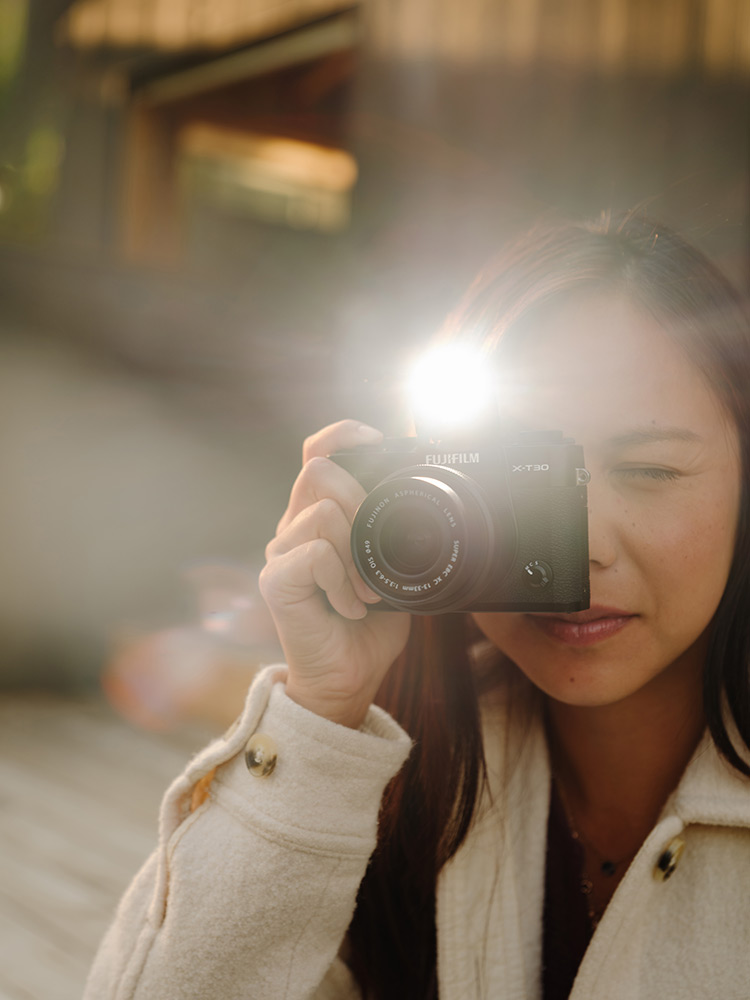
The X-T30 III updates one of Fujifilm’s most accessible cameras, with performance gains without losing any of the charm that makes this camera so popular. The combination of 26.1-megapixel sensor and new X-Processor 5 results in faster autofocus, more responsive operation and better image quality.
Although it keeps the same compact design, subtle improvements and the addition of a Film Simulation Dial make it more intuitive and enjoyable to live with. Beginners benefit from an updated Auto mode, better subject recognition and wireless connectivity that simplifies operation, and more advanced users benefit from improved recording options, extended battery life and compatibility with Fujifilm’s extensive range of X-Mount lenses.
Discover the entire range of Fujifilm Mirrorless Cameras, and choose your own personal favourite, whether that’s a body-only or lens kit in any of three stylish finishes.
If you’re upgrading or switching, you can trade in a camera or lens and use the value towards Fujifilm’s third iteration in the series.
Share this post:
By Nick Dautlich on 23/10/2025
Nick Dautlich
Senior Content Writer and Product Reviewer
Nick Dautlich is the Senior Content Writer and Product Reviewer at Park Cameras, with over 15 years of photography experience. A Sony Imaging Professional and expert reviewer, Nick has worked with major brands such as Canon, Sony and Nikon. His work is also featured on Vanguard World UK’s website, Capture Landscapes, and Shutter Evolve. Nick’s photography includes National Trust projects and magazine covers and he is passionate about landscapes and storytelling. Nick also enjoys hiking and teaching his children about nature. Learn more on his profile page.
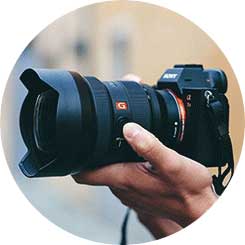
Trade in your old equipment
Fast and easy trade in service ensures your old gear is collected efficiently and you are paid quickly! It's very simple to trade in your unwanted photography gear. Just head over to our dedicated Sell or Part Exchange page, fill out the details, and we'll get back to you with an offer for your old gear. Take the cash, or put it towards the cost of your new gear. It's up to you! Find out more
sign up to the newsletter
Keep up to date on the latest photography news, events and offers. Sign up now